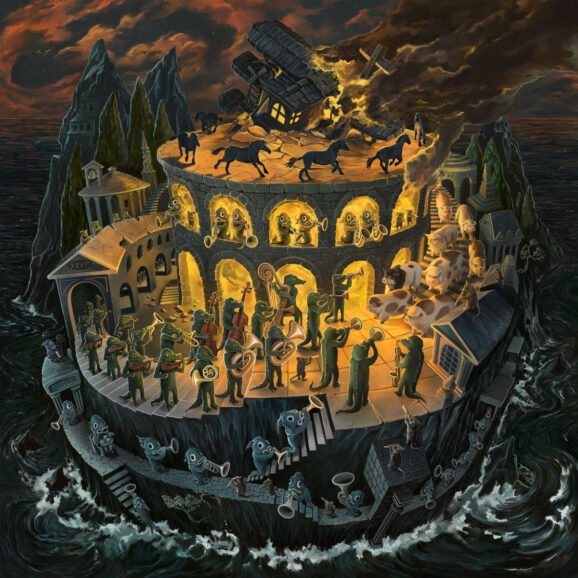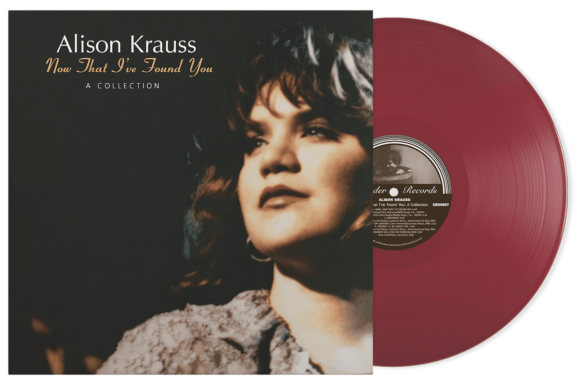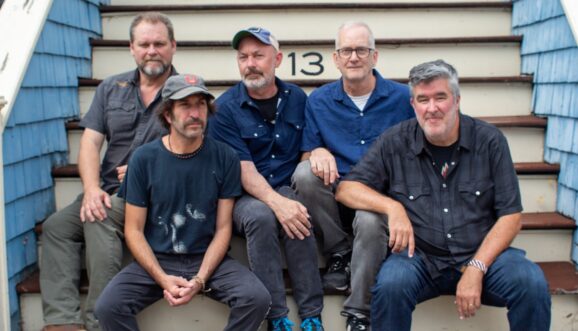With over fifty years under their collective belts, no one could blame bluegrass mainstays The Seldom Scene for resting on their laurels and taking it easy. After all, the Bethesda, Maryland, area quintet has claimed authorship to an iconic discography consisting of over two dozen releases and has been an influential presence throughout the country’s summer bluegrass festival circuit for decades.
While none of the members from the original 1971 lineup remain – the 2016 departure of founding banjoist Ben Eldridge marked the end of the original bloodline – the group still carries on with the same musical ethos. The most recent lineup, consisting of Dudley Connell (guitar), Lou Reid (mandolin), Ronnie Simpkins (bass), Ron Stewart (banjo/fiddle) and Fred Travers (dobro) continues to do an exemplary job of providing the masses with their unique progressive-tinged sound.
Admittedly, you’re not necessarily going to find the same jaw-dropping guitar licks or extended psychedelic jams conjured up by many of the genre’s hottest firebrands like Billy Strings or Kitchen Dwellers, but that’s not the point. The Seldom Scene knows what their wheelhouse is, and they stick to it: tight vocal harmonies, professional-caliber picking, and an eclectic songbook that draws from many genres. The bluegrass embodiment of “Ol’ reliable”.
With Remains to Be Scene, the group’s first release in five years and second to be procured under the iconic Smithsonian Folkways record label, The Seldom Scene remains steadfast to the successful formula that has propelled its half-century of bluegrass relevancy.
Remains to Be Scene is ultimately a bittersweet affair for the ensemble as it marks their first release since the death of Eldridge, who passed away last April at the age of 85. Eldridge had remained close with the current lineup since his 2016 retirement, even offering up some comprehensive and heartfelt liner notes for this record prior to his passing. The album also stands as the final recording for longtime member Dudley Connell, who recently announced his retirement from the group after a nearly thirty-year stint. However, despite these setbacks, Remains to Be Scene still manages to maintain a markedly sunny disposition and keeps the listener engaged throughout, thanks to an engrossing tracklist inspired by a range of artists from Flatt & Scruggs and Bob Dylan to John Mellencamp and The Kinks.
The album opens up with the locomotive pacing of Ray Douglas Davies’ “Last of the Steam Powered Trains”. Later recorded by The Kinks in 1968, this version takes on an almost auto-biographical nature thanks to Lou Reid’s strained vocal delivery of lyrics like “I’m the last of the good old renegades / All my friends are all middle class and grey / But I live in a museum, so I’m okay”.
“Man at the Crossroads”, a saccharine affair authored by David Norris, a neighbor of Fred Travers, is buoyed by some eloquent fiddle runs from Ron Stewart and evokes familiar echoes of some of the gentler Peter Rowan-penned material from his days with Old & In The Way.
Connell’s well-preserved vocals deliver authenticity to a bouncy rendition of Jim Croce’s “A Good Time Man Like Me Ain’t Got No Business (Singin’ the Blues)”. At the same time, Stewart does the same with Woody Guthrie’s blue-collar anthem “Hard Travelin’”, with this arrangement borrowing heavily from an early-1960s Flatt & Scruggs recording.
A pair of lesser-known Dylan tracks offer up the LP’s standout moments, with a goosebump-inducing vocal performance from Ronnie Simpkins on “Farewell, Angelina”. A surrealist love letter written in the mid-1960s, “Farewell, Angelina” went on to become a staple of Joan Baez’s live repertoire and has been reinterpreted by dozens of artists worldwide, including John Mellencamp, whose 1999 arrangement on Rough Harvest was used as a musical template for this recording.
As with the opening track, Reid’s weathered lead vocal delivery once again bolsters an upbeat version of Dylan’s obscure “Walkin’ Down the Line.” The song was ultimately popularized in bluegrass circles by The Country Gentlemen but has remained entirely absent from Dylan’s live setlists since its 1963 studio recording.
Travers makes the most of a welcome opportunity to show off his impressive vocal abilities on Bobby Love’s “Lonesome Day” before being joined by Connell for an emotional duet on Don Reno’s forlorn country and western-tinged “I Could Cry.”
Composed by Canadian folk-music icon Willie P. Bennett, “White Line” has been a fixture in The Seldom Scene catalog for decades, including a recording from their iconic 1975 live album, Live at The Cellar Door. This version finds Reid doing a commendable job of recreating founding member John Starling’s enduring vocal performance and some remarkably soulful group harmonies from the entire ensemble, resulting in one of the album’s most intriguing moments.
Remains to Be Scene closes out on an upbeat note with a pair of bona fide toe-tappers. Another impressive group vocal effort is featured on “Show Me the Way to Go Home”, written by Cullen Galyean, who was a large presence in the North Carolina-area bluegrass scene before he died in 2010.
The album wraps up with Connell helming the lead vocals on an emotional version of “The Story of My Life”, a tune he performed frequently during his time with the bluegrass outfit The Johnson Mountain Boys and stands as a fitting farewell to the band that has helped define his musical career for the last three decades.










One Response
Clay Hess has had Dudley’s slot all this year!